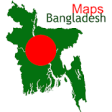- History of Ethiopian Empire for Android
Key Details of - History of Ethiopian Empire
- (English)...
- Last updated on 6/23/2020
- Virus scan status:
Clean (it's extremely likely that this software program is clean)
Developer's Description
(English)
The Ethiopian Empire (Tigrinya: , Amharic: , Mngst Ityop'p'ya), also known by the exonym "Abyssinia" (derived from the Arabic al-Habash), or just simply Ethiopia (/iiopi/; Ge'ez: , Amharic: , tyy, About this soundlisten (helpinfo), Tigrinya: , Oromo: Itoophiyaa, Somali: Itoobiya, Afar: Itiyoophiyaa)[12] was a kingdom that spanned a geographical area in the current states of Eritrea and Ethiopia. It began with the establishment of the Solomonic dynasty from approximately 1270 and lasted until 1974, when the ruling Solomonic dynasty was overthrown in a coup d'tat by the Derg.
The territory of present-day Eritrea, after the end of the Kingdom of Aksum, was the domain of the Bahr Negus ("King of The Sea") of which the territory was the Medri Bahri (from 1433 to 1896) which throughout history was also a province of the Ethiopian empire, followed by coastal occupation of the city Massawa of today's Eritrea from Habesh Eyalet and then by British occupation of Egypt in 1882. In 1890 was occupied by Italy and became Italian Eritrea. Ethiopia and Liberia were the only two African nations to remain independent during the Scramble for Africa by the European imperial powers in the late 19th century. Ethiopia remained independent after defeating Italians during the First Italo-Ethiopian War. Later, after the Second Italo-Ethiopian War, the Italian Empire occupied Ethiopia briefly for five years and established the Italian East Africa colony in the region. The Italians were later driven out with the help of the British army. The country was one of the founding members of the United Nations in 1945.
By 1974, Ethiopia was one of only three countries in the world to have the title of Emperor for its head of state, together with Japan and Iran under the Pahlavi dynasty. It was the second-to-last country in Africa to use the title of Emperor; the only one later was the Central African Empire, which was implemented between 1976 and 1979 by Emperor Bokassa I.
Explore More

Dua Ganj ul Arsh + Audio (Offline)
Free
MOD BIKINI BOTTOM FOR MCPE
Free
KALENDAR MALAYSIA 2020 DAN 2021
Free
Maps of Bangladesh
Free
Laws of Human Nature
Free
Mixtec San Juan Colorado - Bible
Free
Tutorial menjadi Youtuber untuk pemula
Free
Shengjing Chinese
Free
Natural resources
Free
Teen Coloring Titans Guys
Free
Kaptan Imran Khan Meter - PM's 100 days agenda
Free
The Tragedy of Macbeth | William Shakespeare
Free